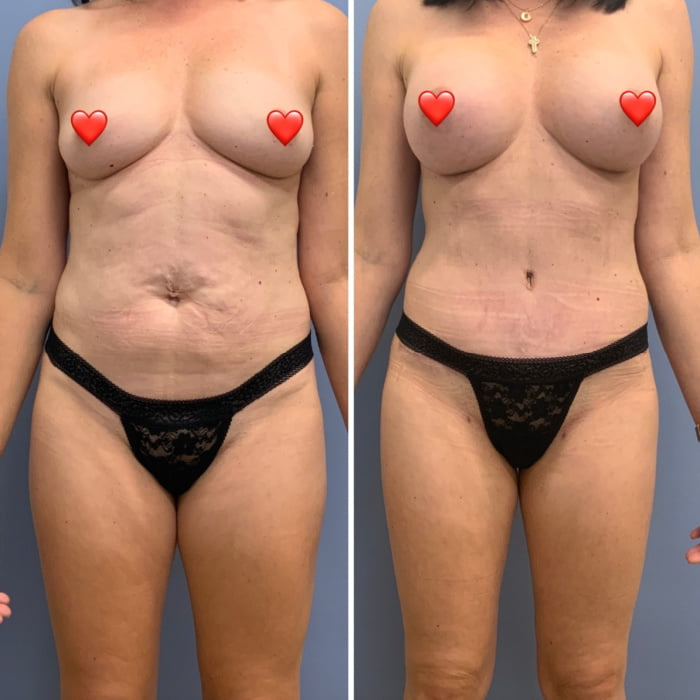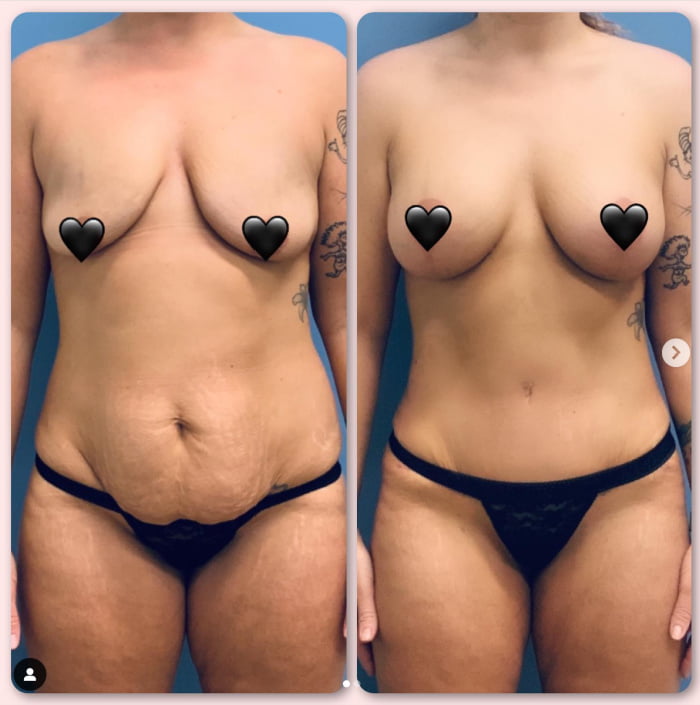Top FAQs About Breast Augmentation for Moms

Are you considering breast augmentation after baby? You probably have several questions! Expert breast augmentation surgeon, Dr. Brian Reedy, is here to answer them all. Below, we’ve compiled a list of FAQs moms have about breast augmentation.
- When is the right time to have breast augmentation after having kids?
- Will breast augmentation correct sagging breasts after pregnancy and breastfeeding?
- Will I have visible scars after breast augmentation?
- What’s the difference between submuscular and subglandular implant placement?
- What is the recovery process like?
- When can I start exercising again after breast augmentation?
- How will my breasts change if I have more children after breast augmentation?
- Can I breastfeed after breast augmentation?
- What happens if I decide to remove my implants in the future?
When is the right time to have breast augmentation after having kids?
When you’re ready! Breast augmentation can be safely performed with stunning results at nearly any stage of life. That said, we do recommend waiting until you’ve finished breastfeeding and your breasts have returned to their baseline size, which can take 3 to 6 months post-weaning. It’s also best to be near or at a healthy, stable weight you are happy with so significant weight fluctuations don’t impact your results.
- Check out our blog, Breast Augmentation After Kids: 4 Incredible #drreedygirl Transformations (With Photos!) to see these moms’ results.
Will breast augmentation correct sagging breasts after pregnancy and breastfeeding?
Sometimes! Implants can often provide enough volume to lift breast tissue and minimize a droopy breast appearance; however, breast augmentation alone may not correct significant sagging. If you have noticeable sagging, or you would like to resize or reposition the nipple-areolar complex to be more proportionate and centered on the breast mound, we recommend adding a breast lift (mastopexy) to your surgery plan so you are thrilled with your results.


Will I have visible scars after breast augmentation?
We place incisions so that resulting breast augmentation scars heal as very thin lines and are well-concealed in natural body creases or shadows. There are 3 main incision techniques for breast augmentation:
- Inframammary fold: This incision is made in the crease under the breast and is typically the preferred choice for the most precise implant placement. Scarring is virtually imperceptible and hidden in the natural fold of the breast.
- Periareolar: This incision is made around the edge of the areola—the pigmented area of your breast. A periareolar incision can result in a less noticeable scar but may impact nipple sensation and breastfeeding.
- Transaxillary: This incision is made in the armpit, which means there are no scars on the breast. However, it may offer less precise placement for certain implant types and isn’t often recommended.
Check out the #drreedygirl hashtags on Instagram to see real results from #drreedygirl moms!
What’s the difference between submuscular and subglandular implant placement?
When you choose submuscular placement (under the muscle), we position the implant beneath the chest muscle, while subglandular placement (over the muscle) is above the muscle but beneath your breast tissue. Most patients prefer submuscular placement because it typically provides a more natural look and feel, with a lower risk of visible rippling (saline implants are more likely to show rippling than silicone implants). If you have a good amount of natural breast tissue, you may be able to adequately cover a subglandular implant, concealing any potential rippling and maintaining a natural look and feel.
“This was the best decision I’ve ever made!! I’ve wanted a breast augmentation for as long as I can remember. Between his knowledge and calming presence, plus the beautiful aesthetic results he produces, I knew he was the perfect surgeon for me and my goals. The whole process was simple and streamlined… I couldn’t recommend this practice enough!!!”
5-star Google review
What is the recovery process like?
You’ll need to dedicate 5-7 days to focus on recovery to let your body rest and heal, but you’ll be able to go back to work after about 1 week. As your body recovers, you can resume normal activities gradually, but you cannot lift anything over 5-10 lbs for at least 4-6 weeks. If you have small children at home, you may need to arrange for childcare until it is safe and comfortable for you to care for them without delaying your full recovery and compromising ideal results.
You’ll see immediate improvements in your breast shape and volume, and these results will continue to improve as your breasts settle into their final appearance about 6 months to 1 year post-op.
For an even faster recovery, we offer rapid recovery breast augmentation to help you return to your normal routine within about 4 days and see outstanding results:
- Ahead of surgery, rapid recovery breast augmentation patients follow a nutritional program and take homeopathic supplements to minimize swelling and bruising. We also provide a list of medications and supplements to avoid.
- During the procedure, we use a gentle surgical technique and the Keller Funnel® method to minimize tissue trauma and the risk of infection.
- Once the implants are situated in the breast pocket, we administer a local anesthetic nerve block to control pain for 1-3 days, reducing the need for prescription pain medication and its side effects.
- After surgery, patients use a combination of non-narcotic pain relievers, with prescription pain medication available if needed. Many patients only need to take narcotic pain meds for 2 days or less.
When can I start exercising again after breast augmentation?
Light activities, such as walking, can be resumed the day after surgery and are extremely beneficial in keeping your blood flowing and helping your body heal. Most patients can resume light aerobic activity after about 3 weeks, with more intense exercise resuming after 6 weeks. We will clear you for certain exercise and activity levels at your follow-up appointments, where we monitor your progress and confirm you are healing as expected.
How will my breasts change if I have more children after breast augmentation?
Pregnancy and breastfeeding after breast augmentation can change the size and shape of your breasts, potentially impacting your original results. While implants themselves aren’t typically affected, you might need a breast implant revision to restore the desired appearance. Many women who have more children after breast augmentation are still pleased with their results and do not seek revision surgery.
Can I breastfeed after breast augmentation?
Yes, most women can breastfeed after breast augmentation. The particulars of your surgery plan may influence your ability to successfully breastfeed, such as incision placements; however, we are very meticulous and take great care to leave vital nerves and milk ducts undisturbed for the best possible outcome if you have more children after breast augmentation.
What happens if I decide to remove my implants in the future?
It is safe to remove your breast implants. Sometimes, lifestyles and personal preferences change and many women choose to exchange their implants for a different size—sometimes bigger, sometimes smaller. Some women just want to return to their pre-augmentation size. Once your implants are removed, you may need a breast lift to address any excess skin or changes in breast shape.
When you’re ready, we are here for you!If you have more questions about breast augmentation or would like to try on different implants and learn more about your options, schedule your consultation with Reading breast augmentation surgeon Dr. Brian K. Reedy. Please call 610-320-0200 or click the Contact button at the top of this page.
